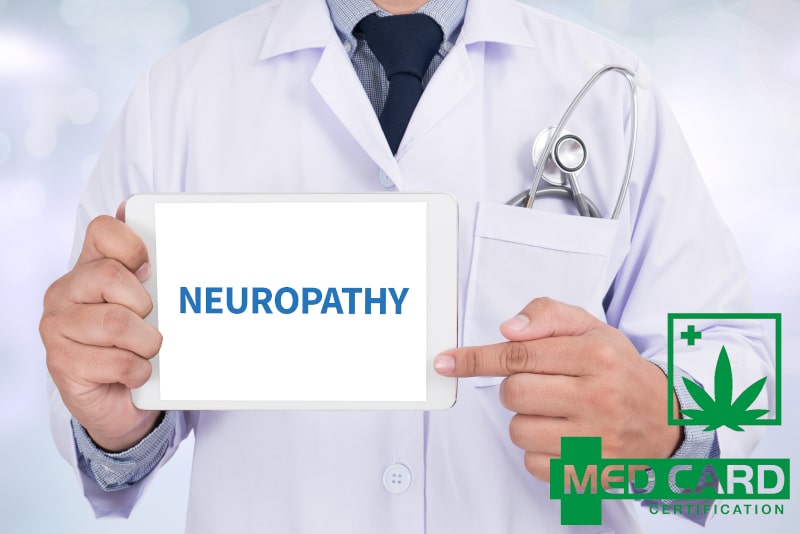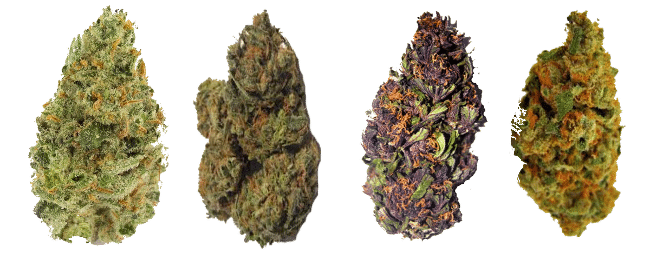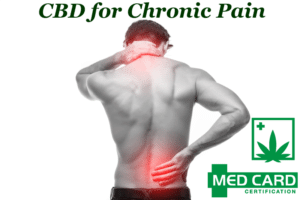
Medical Marijuana Helps Treat Neuropathy
Can Medical Marijuana Be Used To Treat Chronic Neuropathic Pain and what strains work best?
How does medical marijuana help treat neuropathy? There are a number of legitimate scientific studies showing that it can, in many cases. In this post, we’ll talk about this often debilitating condition, go over some of the evidence for medical marijuana’s efficacy in treating it, and list some of the cannabis strains that are being used to relieve neuropathic pain.
If you’re experiencing tingling, burning, shooting, or stabbing pain, you might have a medical condition called “neuropathy.” You have a choice. You can rely on traditional treatments which oftentimes cause other health problems, or you can turn to a therapy that has been shown to be both effective and safe — medical marijuana. As you’ll see, oftentimes only low doses are needed to provide a measure of relief.
A bit about neuropathic pain
Neuropathy encompasses any pain due to nerve damage and is one of the most common types of chronic pain.
Neuropathy affects an estimated 20 million Americans or one to two percent of the population. This debilitating condition takes its toll on individuals in so many ways, creating great physical and emotional distress in addition to drastically impeding social activity.
Low back pain triggered by neuropathy is caused by abnormal pain processing and not an existing musculoskeletal issue. In other instances, neuropathy is triggered by underlying conditions, such as HIV/AIDS, diabetes, alcoholism, MS, or the aftereffects of chemotherapy.
Cause and treatment
Neuropathy, in most cases, is idiopathic, meaning it has no known cause. It attacks spontaneously without warning.
The treatment options are scarce and their efficacy is nominal at best.
Many common protocols for neuropathy are highly toxic, accompanied by multiple, unpleasant side effects. Opioids are highly addictive, and responsible for 47,600 fatal overdoses annually.
Due to the negative outcomes when traditional medicines are utilized, many neuropathy sufferers are turning to medical marijuana for relief.
Types of neuropathy
Neuropathy can be broken down into several categories:
Peripheral neuropathy
Affecting the outer extremities – hands, arms, feet, and legs.Peripheral neuropathy occurs when the peripheral nerves are damaged, thereby causing weakness, numbness as well as pain in the hands and feet. The pain associated with peripheral neuropathy can be best described as stabbing, burning or tingling. Some of the symptoms of peripheral neuropathy nevertheless include gradual onset of numbness, prickling or tingling in your feet or hands, a sharp, jabbing, throbbing, freezing or burning pain, extreme sensitivity to touch, lack of coordination and falling, as well as muscle weakness or paralysis if motor nerves are affected. Peripheral neuropathy is said to have so many causes, some of which include medications, exposure to poisons, infections, alcoholism, autoimmune diseases, diabetes as well as inherited disorders
Proximal neuropathy
Nerve damage in the buttocks, thighs, and hips, generally on one side of the body
Diabetic neuropathy
Present in both type one and type two diabetes patients, mostly affecting hands and feet but also interfering with digestive functions.
Optic Neuropathy
Optic neuropathy is an inflammation that damages a bundle of nerve fibers that transmit visual information from the eyes to the brain. This bunch of nerves is known as the optic nerves. This condition is known to result in pain and vision loss. Even though the cause of optic neuropathy is not yet known, scientists have attributed it to potential causes, including direct trauma, nutritional deficiencies, blocked blood flow as well as toxic damage to or pressure on the nerve etc. Optic neuropathy can only be treated if the underlying condition causing it is identified.
Auditory Neuropathy
Auditory neuropathy is a type of hearing condition where it is possible to detect sound with your inner ear, but difficult to send this sound from the brain to the ear. People with auditory neuropathy usually suffer from hearing loss which could either be mild or severe. Some of the common causes of auditory neuropathy include lack of energy at birth, premature birth, neurological disorders, infectious diseases like mumps, immune disorders like Guillain-Barré and even exposure to drugs or chemicals that damage the inner ear.
Autonomic Neuropathy
Autonomic neuropathy occurs as a result of nerve damage. This condition occurs when damaged nerves interfere with the messages sent between the brain and the autonomic nervous system (ANS), thereby causing the ANS to stop working. Of course, the ANS controls voluntary body functions including heartbeat, breathing, sweating, digestion, and blood pressure regulation.
Chronic Inflammatory Demyelinating Polyneuropathy
Chronic Inflammatory Demyelinating Polyneuropathy (CIDP) is a medical condition that causes many debilitating syndromes like muscle weakness/paralysis, fatigue/loss of sensation, as well as pain in areas of the body. As a matter of fact, CIDP is a nerve disease that brings numbness, and pain and it can occur at any point in life.
Cranial Neuropathy
Cranial neuropathy is similar to peripheral neuropathy, except for the fact that it involves the cranial nerves. It should be noted that cranial neuropathy could involve any of the twelve cranial nerves.
Focal Neuropathy
Focal neuropathy occurs when a single nerve is damaged. Most often, this single nerve is damaged in the hand, head, torso, or leg. Focal neuropathy is however less common than peripheral or autonomic neuropathy.
Traditional treatments for neuropathy
Finding effective treatments for all types of neuropathy is extremely challenging.
Traditional allopathic treatments include:
- Pain Medication: Generally speaking, NSAIDs (nonsteroidal anti-inflammatory drugs) are not helpful in alleviating neuropathic pain. They are better at relieving nociceptive pain, and neuropathy does not stem from inflammation. Heavier pharmaceuticals known as opioids (tramadol and oxycodone) are prescribed, in spite of their highly addictive nature.
- Antidepressants: Amitriptyline, nortriptyline, and doxepin (tricyclic antidepressants) are often used to treat the symptoms of neuropathy, by increasing serotonin and noradrenaline to soothe neural pain pathways. SSRIs (Selective serotonin reuptake inhibitors) have also been utilized to combat neuropathic pain. Antidepressants, however, may induce unpleasant side effects, including nausea, constipation, insomnia, dry mouth, sexual dysfunction, appetite increase, drowsiness, and breathing problems.
- Anticonvulsants: Gabapentin and pregabalin are used in seizure prevention, but are also used for nerve pain. They both have profoundly adverse side effects including, abnormal eye movements, clumsiness, constipation, diarrhea, difficulty speaking, drowsiness, dry mouth, and nausea.
- Steroids or Immunosuppressive Medications are used to treat optic neuropathy, such medications are often associated with adverse side effects such as acne, high blood pressure, blurred vision, cataracts, as well as difficulties in sleeping.
Can medical marijuana reduce neuropathic pain?
Medical marijuana is legal in 33 states and the District of Columbia, usually for patients suffering from a list of particular qualifying conditions. Many states’ lists include neuropathy or chronic pain.
A review published in the AMA Journal of Ethics indicated that medical marijuana has shown comparable results to allopathic medications traditionally used to combat neuropathic pain.
The review breaks down the effects of vaporized or dried cannabis with low to medium THC concentration (two to nine percent).
In one study, healthy volunteers were injected with capsaicin (the burning compound in hot peppers) to induce severe pain.
In 2013, in a placebo-controlled, double-blind study published in the Journal of Pain found that low-dose cannabis (1.29 percent THC or less) dramatically reduced neuropathy in comparison to the placebo and medium-dose cannabis.
Many of the participants had experienced less-than-satisfactory results with traditional protocols for nerve pain, leading to the conclusion that low dose, vaporized cannabis may be a viable option for those patients with a treatment-resistant condition.
In a 2010 trial published in the Canadian Medical Association Journal, twenty-three patients were given three varying strengths of medical marijuana to relieve post-surgical neuropathic pain. The authors of the study commented: “A single inhalation of 25 mg of 9.4% tetrahydrocannabinol herbal cannabis three times daily for five days reduced the intensity of pain, improved sleep and was well tolerated. Further long-term safety and efficacy studies are indicated.”
Scientists have actually found a link between medical marijuana and the treatment of optic neuropathy. Many scientists have argued that THC, an active ingredient in medical cannabis can reduce eye pressure and lower blood pressure, thereby preserving the nerves.
How does cannabis relieve nerve pain?
Medical marijuana’s analgesic properties have been well documented for centuries. Cannabis has garnered more credibility as studies gather more and more evidence of its efficacy.
Cannabis produces more than 100 different active compounds known as cannabinoids. Each type of cannabinoid produces a unique effect on the body.
The two most abundant cannabinoids in most strains of cannabis are THC and CBD. THC (Tetrahydrocannabinol) is a psychoactive cannabinoid responsible for the “high” associated with marijuana. CBD (Cannabidiol) is a non-psychoactive cannabinoid associated with pain-relieving benefits.
Both CBD and THC have shown great promise in reducing chronic nerve pain by modifying bodily activities at a cellular level. THC increases beta-endorphins, the body’s natural opioid. And CBD has been shown to increase levels of serotonin.
Oftentimes, when chronic pain is present it is because the body’s own endocannabinoid system is overtaxed. When this happens, the patient might benefit from medical marijuana supplementation.
Cannabinoids have also been known to inhibit pain neurotransmission to areas of the spinal cord that receive sensory information.
Studies have also indicated that certain cannabinoid compounds suppress hypersensitivity of receptors responsible that detect pressure changes by activating CB1 and CB2 receptors.

Best strains of medical marijuana for neuropathy
Multiple strains of cannabis are known to provide patients with some measure of relief from neuropathic pain.
Below are five common strains used to treat neuropathy.
Blue Dream
Blue Dream has a lower CBD content, however, it’s an excellent choice for those suffering from nerve pain. The high THC content may help distract the user from feelings of pain and irritation. Best for day time use.
Jack Herer
Jack Herer offers an energizing, clear-headed high enabling the user to carry on with their day with reduced pain. A beautifully balanced hybrid, it has a tangy, citrus-based flavor. It instills a sense of well being and can help elevate mood and take the user away from their painful condition. It’s ideal for social situations that are normally impeded due to debilitating nerve pain. Jack Herer is best ingested in the day time.
Harlequin
Harlequin is one of the most sought after cannabis strains. It is used for a multitude of conditions. It boasts an extremely high CBD content of up to 15 percent and has been shown to be extremely effective in treating neuropathic pain. It produces a gentle high with a lighthearted, clearheaded effect, giving the user the ability to take on the day to day tasks. Harlequin has a delightful woody/fruity flavor.
White Widow
White Widow is one of the strongest strains in the world. It is popular due to its extremely high THC levels – often as high as 25 percent. d. White Widow leaves the user feeling super chilled yet somehow revitalized. It’s perfect for getting through a painful episode.
ACDC
ACDA is high in CBD, though it has just enough THC content to allow a gentle high. It induces happiness and an overall sense of well being. Many report feeling extremely sociable and find living with chronic pain a little less stressful after ingesting this strain. Earthy and sweet, the flavor is part of the appeal as well.
Not all medical marijuana dispensaries will carry these strains. Talk to your medical marijuana specialist or an experienced budtender to find a suitable strain for treating neuropathy.
Also, keep in mind that marijuana is still illegal in many states. In states where it’s legal, confer with a certified medical marijuana doctor or health care practitioner for guidance in obtaining a medical marijuana license.
How To Get a Medical Marijuana card for Neuropathy
If you are suffering from Neuropathy or another health issue and are a resident of a legal state interested in trying medical marijuana for treatment, you will first need to consult with a certified doctor. To get started, fill out the MMJ patient registration form, press submit and your on your way to get or renew your medical marijuana card. See if you qualify today!

Sign Up for Medical Cannabis Today!
For potential patients, if you’re ready, we make it easy to connect with a medical marijuana doctor nearby or online. If you are interested in getting certified, please fill out the MMJ patient registration form below and press submit to get started. See if you qualify today!

MedCard Registration Form

Helpful Medical Marijuana Links:
Source Studies and Additional Reading
- AMA Journal of Ethics – Medicinal Cannabis and Painful Sensory Neuropathy
- CMAJ Group – Smoked cannabis for chronic neuropathic pain: a randomized controlled trial
- Neuropharmacol – Role of the Cannabinoid System in Pain Control and Therapeutic Implications for the Management of Acute and Chronic Pain Episodes
- Neuropsychopharmacology – Smoked medicinal cannabis for neuropathic pain in HIV: a randomized, crossover clinical trial
- Journal of Pain – Low-dose vaporized cannabis significantly improves neuropathic pain
- NIH.gov – Efficacy of Cannabis-Based Medicines for Pain Management: A Systematic Review and Meta-Analysis of Randomized Controlled Trials
- Journal of Pain – Inhaled Cannabis for Chronic Neuropathic Pain: A Meta-analysis of Individual Patient Data
- American Academy of Neurology – Systematic review: efficacy and safety of medical marijuana in selected neurologic disorder
- NIH.gov – A Cost-Effectiveness Model for Adjunctive Smoked Cannabis in the Treatment of Chronic Neuropathic Pain














